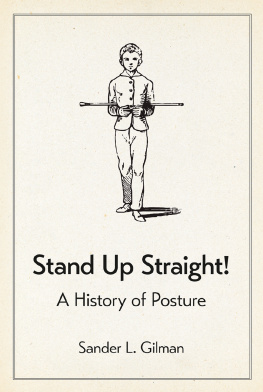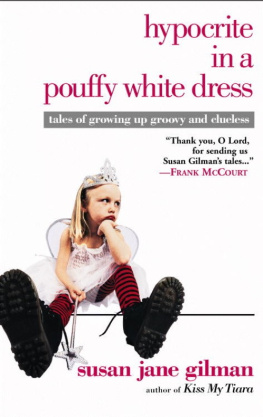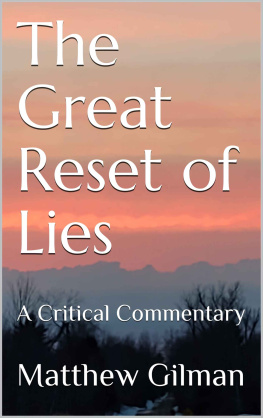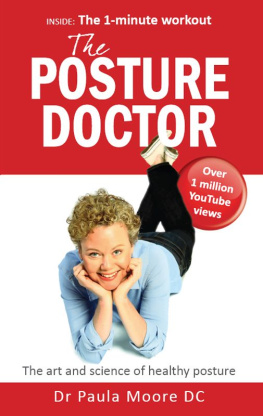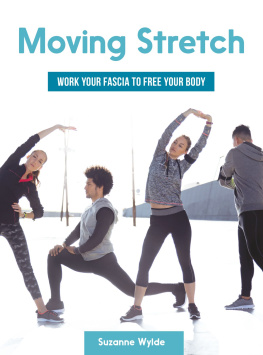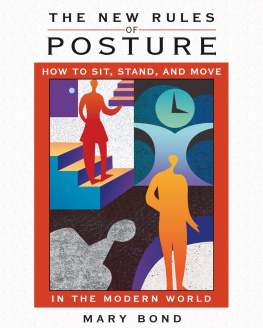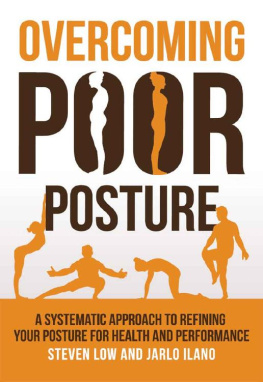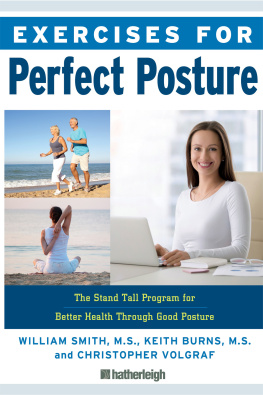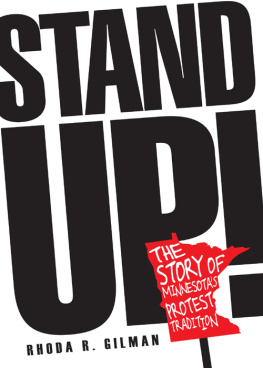STAND
UP
STRAIGHT!

STAND
UP
STRAIGHT!
A History of Posture
SANDER L. GILMAN
REAKTION BOOKS
To Marina V. E. Gilman,
who taught me to stand up straight!
Published by Reaktion Books Ltd
Unit 32, Waterside
4448 Wharf Road
London N1 7UX, UK
www.reaktionbooks.co.uk
First published 2018
Copyright Sander L. Gilman 2018
All rights reserved
No part of this publication may be reproduced, stored in a retrieval system, or transmitted, in any form or by any means, electronic, mechanical, photocopying, recording or otherwise, without the prior permission of the publishers
Page references in the Photo Acknowledgements and
Index match the printed edition of this book.
Printed and bound in Great Britain by Bell & Bain, Glasgow
A catalogue record for this book is available from the British Library
eISBN: 9781780239644
Contents
Preface
P OSTURE IS, as we shall see, a contentious as well as a contradictory concept in Western culture. To write its history in any comprehensive way means being encyclopaedic rather than critical. The chapters in this book reflect the ambiguity of posture in a number of cultural and disciplinary realms. As will become obvious, these blend into one another in odd and often surprising ways over time. Who would have thought, for example, that the aesthetics of eighteenth-century art was shaped both by ideas of dance education and by medical intervention? Who would have imagined that arguments for and against slavery both relied on theories of posture?
Each chapter is thus anecdotal rather than exhaustive. Each story I tell relies on some existing critical work. Yet the totality of thinking about posture as a structuring element in how we define the human as an ethical, moral and functioning being has to date been lacking. The moment we look at the military or at fashion or at pathology or at aesthetics as independent disciplines, posture seems to become a limited and rather pedestrian notion. This point has been made to me often when I have recounted (often at too great a length) to my trapped listeners my obsession with the ubiquity of posture. Following my presentation at medical humanities rounds at a major medical school, I overheard one of my listeners comment: Who would have imagined posture was that interesting? Well, it is, and I hope this book leads to further queries about its ubiquity and meanings.
By linking all these categories (and many others not directly examined in this book), the use of posture can start to be understood in the often subtle appeals of its moral, ethical and critical implications. Stand Up Straight! is a directive to moral action as well as to a physical reaction. Posture comes to be a limiting case for the human. My work on the subject emerged from my work on stereotyping and our anxiety about who we are and whom we can become as humans. It is one more building block in a history of perception. But it is also, and this is perhaps more important, a measure of how much and perhaps how easily we integrate such perceptions of what it means to be human into our bodies and minds. We become the ideal of what we believe we must become, and avoid that which we believe is deleterious to our sense of self. We stand and sit and move not only because of sets of muscles and ligaments and bodily systems that allow us to do so, with real and present limitations, but because of what we believe and what the implications of such beliefs are.
As with many of my earlier works, I rely on a wide range of textual and visual sources for my evidence. Michael Lynch states that visibility in science, in the form of data displays, constitute[s] the material form of scientific phenomena. It is certainly the case that scientific data, as we have long known, are made visible within science through charts and statistical representations. Yet other forms of representations have had (and still have) a role in scientific argument from photographs to films. As are charts, graphs and data patterns of all sorts, they are often closely related to representations as cultural phenomena. Indeed, the idea that visual data has special significance only as scientific evidence belies its visual presence in all forms in the worlds of advertising, fine art and, indeed, caricature. Visual evidence inhabits a place where general, aesthetic and scientific meanings overlap, often with unforeseen consequences. Studying posture in culture means seeing posture.
Stand Up Straight! is the first attempt to provide a sketch (and it is no more than that) of what I hope will be an engaging way of seeing cultural history as a formative aspect across multiple disciplines. These are all disciplines created to explain aspects of human nature using posture as a litmus test. They thus receive their substance from world views that emphasize specialist knowledge but which simultaneously reflect cultural presuppositions. Cutting across disciplines in the way I have in this volume may highlight some connections otherwise not seen and provide links between the various levels of the meaning of posture.
Introduction: Posture Beyond the Workplace
A T THE CLOSE OF 2015 the health columnist of the New York Times, Jane Brody, wrote that she had received a letter from a distraught wife [who] begged me to write about the importance of good posture. My husband sits for many hours a day slouched over his computer, she said. Ive told him repeatedly this is bad for his body he should sit up straight but he pays no attention to me. He reads you every week. Maybe hell listen to you. Brodys reply began: Slouching is bad. Its bad not only for your physical health, but also for your emotional and social well-being. For her, good posture is good health, and good health demands good posture. Brody doesnt say so, but she views our bodies as ill-fitted for the modern world. Our work habits, our technology, even our vulnerability to crime are all affected by our posture. Indeed, how we think is affected, since slouching can also reduce lung capacity by as much as 30 percent, reducing the amount of oxygen that reaches body tissues, including the brain. The bottom line of this fascination with posture is that we are Homo economicus, workers whose posture bears on our ability to function as economic entities.
Posture so defined has long been part of our world of economic productivity. As early as the nineteenth century, brain workers were seen to suffer from diverse effects of fatigue the carriage is enervated; their posture is weighted down. All feared that the energy of mind and body was dissipating under the strain of modernity. Our bodies, it is claimed, did not evolve to sit but to stand, and standing is our healthier and more natural state. But it is the natural state in which to work. So much so that this association has become the stuff of satire:
I can tell by looking at your little warped potato body now dont get offended, thats just how it looks from up here that you sit all day while working at your desk. Dont tell me probably in a chair? I figured. I used to be like you! Sitting at home, sitting on the train to work, sitting at work, sitting sitting sitting. A quick aside did you know that sitting in a chair all day will literally cause your body to reject your spine? I know.
Such views linking posture, health and sitting are certainly not an invention of the twenty-first century. The standing desk came to be thought of as a cure for specific diseases of literary and sedentary persons, as we read in the notes to the English translation of Samuel-Auguste Tissots thesis

